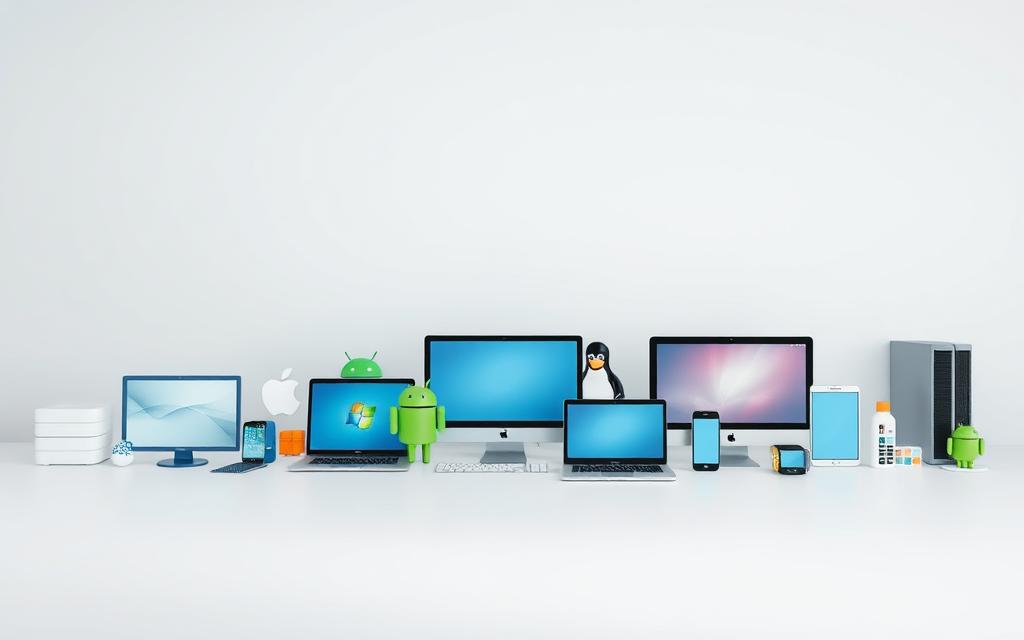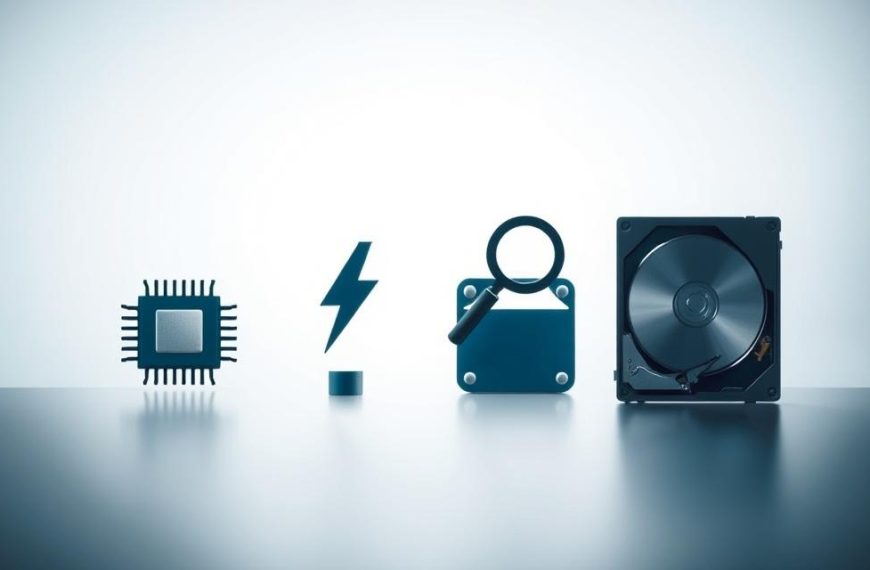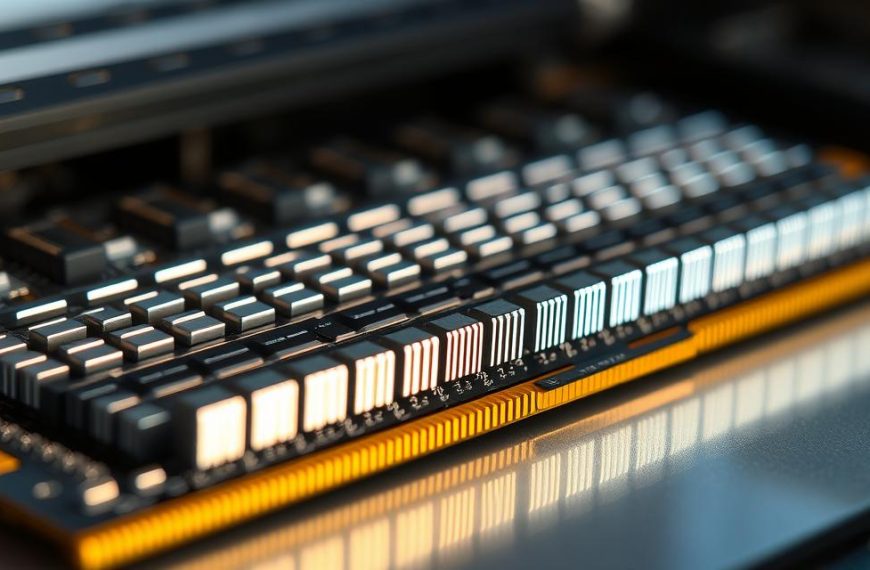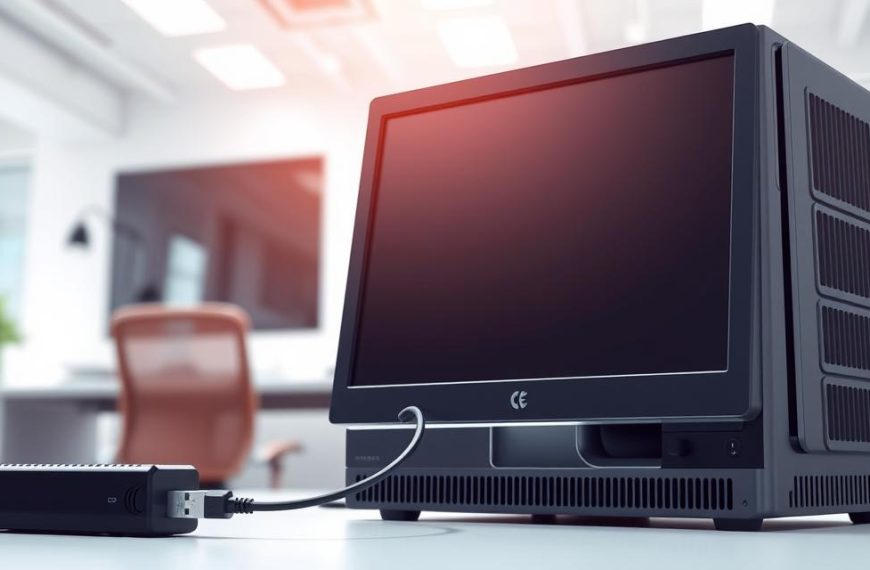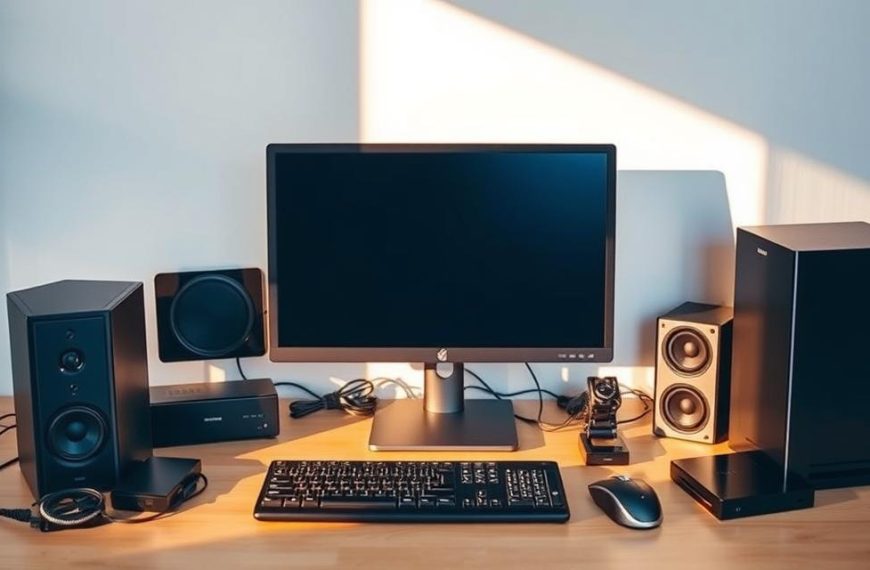Operating systems are the backbone of modern technology, powering everything from smartphones to desktops. They are categorized based on functionality and the devices they support. Understanding these categories helps users optimize their experience and efficiency.
There are eight primary functional categories of operating systems. These include batch, multi-programming, distributed, and real-time systems, among others. Each serves a unique purpose, catering to specific needs and environments.
Mobile and desktop systems also differ significantly. While Windows and Linux dominate desktops, Android and iOS lead the mobile space. This distinction highlights the growing relevance of mobile operating systems in today’s tech-driven world.
Grasping the diversity of operating systems ensures better decision-making for users. Whether for personal or professional use, knowing the right system can enhance productivity and performance.
Introduction to Computer Operating Systems
At the core of every device lies a system that bridges users and hardware. This system, known as an operating system, acts as an intermediary, ensuring seamless interaction between software and physical components. It manages resources efficiently, making it a critical component of modern technology.
One of the primary functions of an operating system is process management. It allocates memory, schedules tasks, and ensures smooth execution of applications. Memory allocation is another key role, optimizing performance by managing available space effectively.
Security is a vital aspect of operating systems. They protect data from unauthorized access and ensure safe interactions between users and devices. Disk management and peripheral control are also handled by the system, ensuring efficient storage and device connectivity.
User interfaces play a significant role in how users interact with devices. Graphical User Interfaces (GUI) and Command-Line Interfaces (CLI) are the two main types. GUIs are user-friendly, while CLIs offer more control for advanced users.
“The evolution of operating systems has transformed them from single-user environments to complex, multi-functional platforms.”
This evolution highlights the growing importance of operating systems in today’s tech-driven world. Understanding their functions and roles sets the foundation for exploring their categorization and applications.
Batch Operating Systems
Batch operating systems streamline repetitive tasks by grouping similar jobs for efficient processing. These systems are designed to handle large volumes of data without requiring constant user interaction. By organizing tasks into batches, they minimize idle time and maximize resource utilization.
What is a Batch Operating System?
A batch operating system groups similar programs into a single batch for processing. This method is particularly effective for repetitive tasks like payroll calculations or bank statement generation. The operator sorts and schedules these batches, ensuring smooth execution without manual intervention.
Advantages and Disadvantages
Batch systems offer several benefits. They allow multi-user sharing and reduce idle time by processing tasks sequentially. However, they face challenges like CPU inefficiency during I/O operations and the risk of job failures. These limitations make them less responsive compared to real-time systems.
Examples of Batch Operating Systems
Batch systems are widely used in the financial sector. Payroll systems and bank statements are common examples. They are also employed in enterprise environments where large-scale, repetitive tasks are the norm. Despite their limitations, batch systems remain a vital tool for efficient data processing.
Multi-Programming Operating Systems
Multi-programming systems revolutionize computing by enabling multiple programs to run simultaneously. This approach maximizes resources and improves efficiency by keeping the CPU busy at all times. It’s a game-changer for both users and applications, offering a smoother and more productive experience.
Understanding Multi-Programming
Multi-programming allows several programs to reside in memory at once. The CPU switches between them, ensuring continuous execution. This method reduces idle time and boosts overall system performance. Memory allocation strategies play a crucial role in managing these concurrent tasks effectively.
Benefits and Drawbacks
One of the key advantages is better CPU utilization. Multi-programming reduces response time, making systems more responsive. However, it also introduces challenges like security risks in shared environments. Managing multiple processes can sometimes lead to complexity and resource conflicts.
Real-World Applications
Multi-programming is widely used in enterprise environments. Examples include IBM VM/CMS and Windows Terminal Services. These systems are ideal for server and desktop implementations, offering scalability and efficiency. They are particularly effective in environments where multiple users need simultaneous access to resources.
Multi-Processing Operating Systems
Multi-processing systems leverage multiple CPUs to enhance performance and efficiency. Unlike multi-programming, which focuses on running multiple programs on a single CPU, multi-processing utilizes several CPUs for parallel execution. This approach maximizes resources and ensures higher throughput.
What is Multi-Processing?
Multi-processing involves using multiple CPUs to execute tasks simultaneously. This method is ideal for applications requiring high computational power. It can be symmetric, where all CPUs share the same memory, or asymmetric, where each CPU has a specific role. Load balancing ensures tasks are evenly distributed across all CPUs.
Advantages of Multi-Processing
One of the key benefits is fault tolerance. If one CPU fails, others can take over, ensuring uninterrupted operation. Multi-processing also improves energy efficiency by distributing workloads. Compared to single-core systems, it offers faster processing and better scalability for complex tasks.
“Multi-processing is the backbone of modern server environments, offering unmatched reliability and performance.”
Examples of Multi-Processing Systems
Modern computers and servers often use multi-processing. Examples include Linux-based servers and Windows Server editions. These systems are widely used in data centers, where failover capabilities and load balancing are critical.
| Symmetric Processing | Asymmetric Processing |
|---|---|
| All CPUs share the same memory | Each CPU has a specific role |
| Ideal for general-purpose tasks | Best for specialized operations |
| Easier to implement | Requires careful task allocation |
Multi-User Operating Systems
Multi-user operating systems enable multiple individuals to interact with a single system simultaneously, fostering collaboration and resource sharing. These systems are designed to handle concurrent access from various users, making them ideal for environments like servers and educational institutions.
Definition of Multi-User Systems
A multi-user operating system allows several users to access resources on a single computer or server at the same time. It uses techniques like time-slicing to allocate CPU time efficiently, ensuring smooth operation for all users. This setup is common in environments where shared resources are essential, such as banks and universities.
Pros and Cons
One of the key advantages is resource sharing. Users can access printers, files, and applications without needing individual setups. This reduces costs and improves efficiency. However, these systems can face performance issues when too many users log in simultaneously. Additionally, shared environments raise security concerns, as sensitive data becomes accessible to multiple individuals.
Common Uses
Multi-user systems are widely used in sectors like banking, education, and cloud computing. For example, banks use them to manage account details and transactions securely. Educational institutions rely on these systems to provide shared access to resources like libraries and databases. Cloud computing implementations also benefit from multi-user architectures, enabling scalable and efficient operations.
“Multi-user operating systems are the backbone of collaborative environments, ensuring seamless resource sharing and access.”
Understanding the role of multi-user systems helps organizations optimize their workflows and enhance productivity. For more details, explore this comprehensive guide on multi-user operating systems.
Distributed Operating Systems
Distributed operating systems redefine how resources are shared across multiple devices, enabling seamless collaboration and efficiency. These systems connect autonomous computers within a shared network, allowing them to work together as a unified entity. This architecture is particularly useful for large-scale applications that require high availability and scalability.
What are Distributed Systems?
Distributed systems consist of independent nodes that communicate over a network. Each node operates autonomously but collaborates to achieve common goals. This setup ensures that if one node fails, others can continue functioning, enhancing overall reliability. Data synchronization is a key challenge, as nodes must maintain consistency across the network.
Benefits and Challenges
One of the primary advantages is scalability. Distributed systems can easily expand by adding more nodes. They also offer failure isolation, ensuring that issues in one node do not disrupt the entire network. However, managing latency in global networks and ensuring security across multiple nodes remain significant challenges.
“Distributed systems are the backbone of modern cloud computing, offering unmatched scalability and resilience.”
Examples of Distributed Systems
Examples include LOCUS, a pioneering distributed operating system, and modern cloud storage platforms like AWS and Google Cloud. These systems are widely used in enterprise clusters and edge computing applications. They contrast sharply with centralized architectures, which rely on a single point of control.
Network Operating Systems
Network operating systems play a pivotal role in managing resources across interconnected devices. These systems ensure seamless communication and efficient resource sharing, making them essential for businesses and organizations. By centralizing management, they simplify tasks like user authentication and data access.
Understanding Network OS
Network operating systems manage servers and other devices within a network. They facilitate client-server relationships, where one device requests services and another provides them. Directory services, like Active Directory, help organize and manage user accounts and permissions efficiently.
Advantages and Disadvantages
One major advantage is centralized security. Network OS ensures that all devices comply with the same protocols, reducing vulnerabilities. However, they can be complex to set up and maintain. Patch management is another challenge, as updates must be rolled out consistently across all devices.
“Network operating systems are the backbone of modern enterprise environments, offering unmatched scalability and control.”
Examples of Network OS
Popular examples include Windows Server and UNIX. These systems are widely used in enterprise settings for their reliability and robust features. They contrast with peer-to-peer networks, which lack centralized management and are less scalable.
Real-Time Operating Systems
Real-time operating systems prioritize precision and speed, ensuring tasks are completed within strict time constraints. These systems are essential for applications where delays are unacceptable, such as medical imaging or air traffic control. By managing hardware and devices efficiently, they guarantee deterministic responses, making them indispensable in critical environments.
What is a Real-Time OS?
A real-time operating system (RTOS) is designed to process data and execute tasks within predefined time limits. It ensures that every process meets its deadline, whether in microseconds or milliseconds. This capability is crucial for applications like industrial automation, where even minor delays can lead to significant consequences.
Types of Real-Time Systems
Real-time systems are categorized into two main types: hard and soft. Hard real-time systems have non-negotiable deadlines, such as those used in medical devices. Soft real-time systems allow for some flexibility, like streaming platforms. Both types rely on efficient memory allocation and task-switching strategies to maintain performance.
| Hard Real-Time Systems | Soft Real-Time Systems |
|---|---|
| Strict deadlines | Flexible deadlines |
| Used in safety-critical applications | Common in multimedia and gaming |
| Zero tolerance for delays | Minor delays are acceptable |
Applications of Real-Time OS
Real-time operating systems are widely used in industries requiring high reliability and speed. Examples include medical imaging systems, air traffic control, and industrial automation. These systems ensure that devices operate seamlessly, even under extreme conditions. Their ability to handle safety-critical tasks makes them a cornerstone of modern technology.
“Real-time operating systems are the backbone of industries where precision and reliability are non-negotiable.”
Understanding the role of real-time systems helps professionals choose the right solution for their needs. Whether in healthcare, aviation, or manufacturing, these systems deliver unmatched performance and security.
Mobile Operating Systems
Mobile operating systems have transformed the way we interact with technology, offering intuitive interfaces and seamless connectivity. These systems power smartphones and tablets, enabling users to perform tasks on the go. With features like touch optimization and app ecosystems, they have become indispensable in our daily lives.
Overview of Mobile OS
A mobile operating system is designed specifically for handheld devices. It manages hardware and software resources, ensuring smooth performance. Key features include a user interface optimized for touch, app stores for software distribution, and robust security measures to protect data.
Two dominant players in this space are Android and iOS. Android, based on Linux, offers flexibility and customization. iOS, built on Unix, provides a streamlined and secure experience. Both systems have evolved to support advanced technologies like 5G and AI.
Advantages and Disadvantages
Mobile operating systems offer several benefits. They are optimized for touch gestures, making them easy to use. App ecosystems provide access to millions of applications, enhancing functionality. Regular updates ensure improved performance and security.
However, challenges exist. Battery life can be a concern, especially with resource-intensive apps. Fragmentation in Android devices can lead to inconsistent updates. Additionally, the reliance on app stores can limit user control over software installation.
Examples of Mobile OS
Android and iOS dominate the market, but other systems like Windows Mobile and BlackBerry OS have also made their mark. Below is a comparison of the two leading platforms:
| Feature | Android | iOS |
|---|---|---|
| Base | Linux | Unix |
| Customization | High | Limited |
| App Store | Google Play | Apple App Store |
| Security | Moderate | High |
Mobile operating systems continue to evolve, addressing challenges like battery life and fragmentation. Their role in enterprise mobility management is also growing, enabling businesses to secure and manage devices effectively. As technology advances, these systems will remain at the forefront of innovation.
Conclusion
Choosing the right operating system can significantly impact productivity and efficiency. With eight core functional categories, each system caters to specific needs, from batch processing to real-time applications. Specialization trends continue to shape the landscape, with hybrid systems combining multiple functionalities for enhanced performance.
Edge computing is emerging as a game-changer, enabling faster data processing closer to devices. As technology evolves, new architectures are being developed to meet the demands of modern users. When selecting an operating system, consider factors like scalability, security, and compatibility with your devices.
Informed choices ensure optimal performance and future-proof your setup. Whether for personal or professional use, understanding the types of operating systems empowers you to make decisions that align with your goals.

